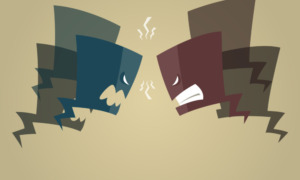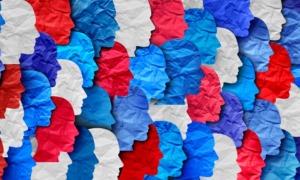Back in 1998 a wonderful youth program in Brooklyn, El Puente Academy for Peace and Justice, came under the spotlight of critical attention when it introduced a course on hip-hop. Critics of this and other efforts to create a “pedagogy of the oppressed” for today’s disadvantaged youth rest their opposition on two oversimplified and terribly confining points:
First, the lyrics “studied” are all too often lurid, misogynistic, violent, pornographic, drug-oriented and a glorification of materialism – so a total ban is recommended.
Second, a course on hip-hop steals time from more important endeavors such as addressing the weak basic skills of vulnerable youth in alternative and community-based settings.
These sweeping indictments rob youth programs of a powerful tool for healthy youth development – namely, popular music.
Kids employ music to learn about worlds they may know little about: jail, sex, ghettos, love, gangs, gender roles, race, poverty, war and peace. They also use music to withdraw or organize boundaries from adults in a nearly timeless pattern of teen separation.
But music in teen circles also serves the opposite function. It facilitates relationship building, and the kind of music a teen listens to helps build both personal identity and community identity.
Consider Cannibal Ox, whose “Cold Vein” has impressed many with its realistic picture of both urban darkness and compassion. This is just one of countless groups that carry forward a great American tradition of protest and social commentary. The problem for youth workers is that while the sound of the music is great, it takes a huge effort to find hip-hop lyrics that can be described in public forums with minors and even older teens without inviting the wrath of parents and others. We need a way to find lyrics that are authentic but still acceptable for use in public discourse.
If hip-hop and other forms of popular music are model empowerment tools – created by and for young people – then youth workers, armed with relatively safe lyrics, should once again explore how this music can be used in well-run youth programs.
Here are some ideas: discussion exercises using lyrics to build political consciousness and civic engagement; writing music or writing about music to sharpen literacy; teaching musical concepts; performances to build community and provide a safe means of self-expression; historical musical research; asset-mapping that focuses on the local musical tastes of the community; interviews with aging musicians; debates on the First Amendment implications; the rights of rappers compared to the rights of women and gays to protest the lyrics; and economic analyses of the community impacts of advertiser boycotts.
Hip-hop is too important a phenomenon not to use in youth programs. But, alas, we have the aforementioned problem of finding suitable lyrics.
Perhaps we need a database of appropriate hip-hop lyrics for use by aging youth workers. It would identify appropriate lyrics suitable for use in youth programs and dispense with others, such as Ludacris f/Nate Dogg in “Area Codes”: “I’ve got hoes. … I’ve got hoes … in different area codes. … Hoes … in different area codes.”
There is not much you can do with Ludacris’ words.
But the database might also land us on Vast Aire, a member of Cannibal Ox, who notes in “Painkillers,” a song about drug dependency, “At the end of my rope/Writin’ these notes/Hopin’ to float/Above this bullshit.” Or addressing the gritty side of New York City, he raps: “Guess that’s why I was born/To recognize the beauty of a rose’s thorn.” And again on urban life: “Stress got my chest a mess/breathless and vexed/trying to escape/from outa the depths of hell’s nest.”
Now, that isn’t ludicrous. This is the stuff creative youth programmers can use. In lieu of a database, we just have to search harder.































